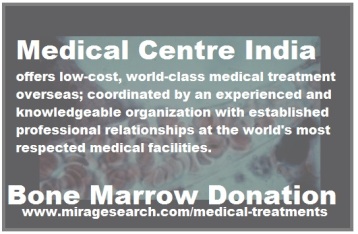 What is bone marrow?
What is bone marrow?
Bone marrow produces blood cells for the body. The blood-forming cells in bone marrow grow into:
Red blood cells, which carry oxygen to all parts of the body White blood cells, which help the body fight infection Platelets, which help control bleeding
A healthy body is always making new blood-forming cells, which are necessary for survival. If the blood-forming cells begin making many abnormal cells and not enough healthy blood cells, as happens in leukemia, a marrow transplant to replace the blood-forming cells may be the best treatment.
What diseases are treated with a marrow transplant?
A bone marrow transplant is a standard treatment option for many patients with life-threatening diseases like leukemia or lymphoma, which are cancers of the blood.
Transplant can also be used to treat other disorders, such as sickle cell disease and certain immune system and genetic disorders.
How does a transplant work?
A bone marrow or umbilical cord blood transplant replaces a patient’s unhealthy blood-forming cells with healthy cells.
First, patients are treated with chemotherapy and/or radiation therapy to destroy unhealthy cells. Next, a donor’s healthy blood-forming cells are given directly into the patient’s bloodstream. This is like a blood transfusion.
For a patient’s body to accept these healthy cells, the patient needs a donor who is a close match. Doctors first look for a matching donor within a patient’s family, but 70% of patients do not have a suitable donor in their family. They depend on the Be The Match Registry to find an unrelated bone marrow donor or umbilical cord blood unit.
Over the next three to four weeks, the donated cells begin to grow and make new blood cells in the patient’s body, and the patient begins the recovery process.

Reblogged this on Future Healer.
LikeLike